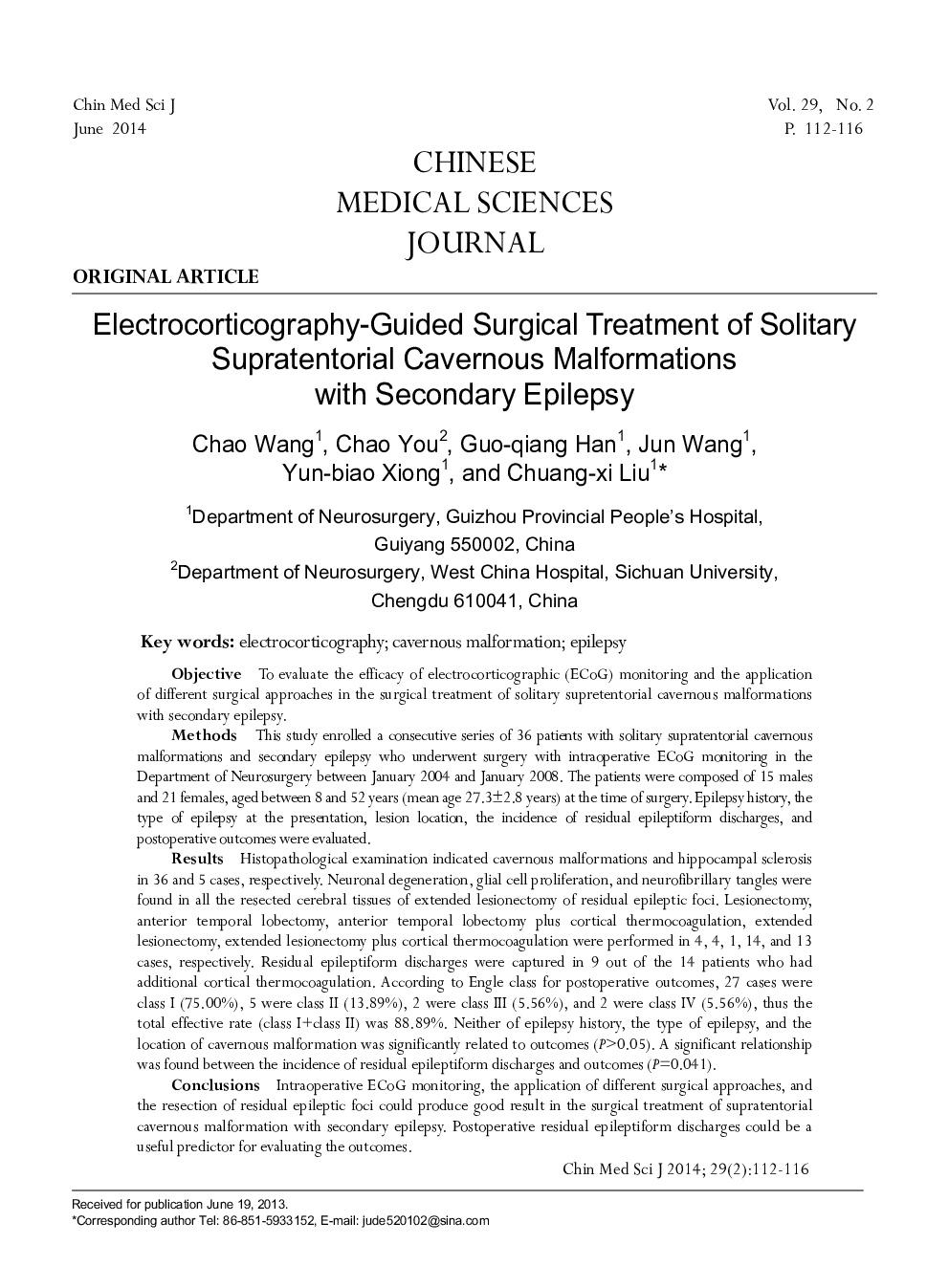| کد مقاله | کد نشریه | سال انتشار | مقاله انگلیسی | نسخه تمام متن |
|---|---|---|---|---|
| 3459533 | 1231172 | 2014 | 5 صفحه PDF | دانلود رایگان |
ObjectiveTo evaluate the efficacy of electrocorticographic (ECoG) monitoring and the application of different surgical approaches in the surgical treatment of solitary supretentorial cavernous malformations with secondary epilepsy.MethodsThis study enrolled a consecutive series of 36 patients with solitary supratentorial cavernous malformations and secondary epilepsy who underwent surgery with intraoperative ECoG monitoring in the Department of Neurosurgery between January 2004 and January 2008. The patients were composed of 15 males and 21 females, aged between 8 and 52 years (mean age 27.3±2.8 years) at the time of surgery. Epilepsy history, the type of epilepsy at the presentation, lesion location, the incidence of residual epileptiform discharges, and postoperative outcomes were evaluated.ResultsHistopathological examination indicated cavernous malformations and hippocampal sclerosis in 36 and 5 cases, respectively. Neuronal degeneration, glial cell proliferation, and neurofibrillary tangles were found in all the resected cerebral tissues of extended lesionectomy of residual epileptic foci. Lesionectomy, anterior temporal lobectomy, anterior temporal lobectomy plus cortical thermocoagulation, extended lesionectomy, extended lesionectomy plus cortical thermocoagulation were performed in 4, 4, 1, 14, and 13 cases, respectively. Residual epileptiform discharges were captured in 9 out of the 14 patients who had additional cortical thermocoagulation. According to Engle class for postoperative outcomes, 27 cases were class I (75.00%), 5 were class II (13.89%), 2 were class III (5.56%), and 2 were class IV (5.56%), thus the total effective rate (class I+class II) was 88.89%. Neither of epilepsy history, the type of epilepsy, and the location of cavernous malformation was significantly related to outcomes (P>0.05). A significant relationship was found between the incidence of residual epileptiform discharges and outcomes (P=0.041).ConclusionsIntraoperative ECoG monitoring, the application of different surgical approaches, and the resection of residual epileptic foci could produce good result in the surgical treatment of supratentorial cavernous malformation with secondary epilepsy. Postoperative residual epileptiform discharges could be a useful predictor for evaluating the outcomes.
Journal: Chinese Medical Sciences Journal - Volume 29, Issue 2, June 2014, Pages 112-116
